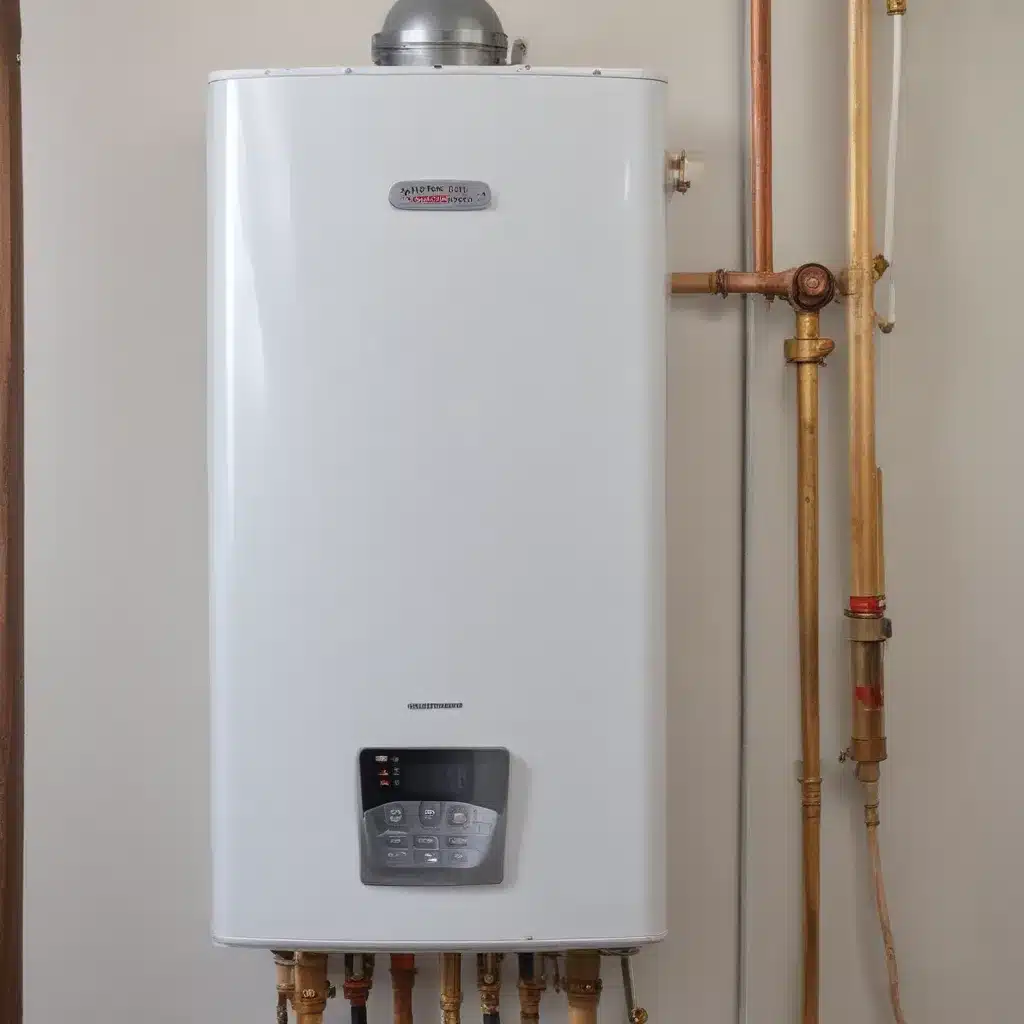
Tankless water heaters have become increasingly popular in recent years due to their energy-efficient operation and on-demand hot water delivery. In our 10 years of water heater experience… However, one common challenge faced by tankless water heater owners is the buildup of mineral scale within the heat exchanger. This scale can significantly impact the performance and lifespan of the unit, making regular maintenance and descaling an essential part of ownership.
Now, this might seem counterintuitive when dealing with water heaters…
The Dangers of Mineral Scale Buildup
Mineral scale is the result of dissolved minerals, such as calcium and magnesium, precipitating out of the water as it passes through the tankless water heater’s heat exchanger. Over time, these minerals can accumulate, forming a hard, crusty deposit that restricts water flow and reduces the unit’s heating efficiency.
As the scale builds up, it can lead to several problems:
- Decreased Water Flow: The narrowed passages caused by scale deposits can significantly reduce the water flow rate, leading to a noticeable drop in water pressure and longer wait times for hot water.
- Reduced Heating Efficiency: The scale acts as an insulator, making it more difficult for the heat exchanger to transfer heat to the water. This results in higher energy consumption and longer heating times.
- Premature Failure: Severe scale buildup can eventually cause the heat exchanger to become completely blocked, leading to the tankless water heater overheating and potentially failing prematurely.
The Importance of Regular Flushing
To combat the issue of mineral scale buildup, it is recommended to flush the tankless water heater’s heat exchanger on a regular basis, typically once a year or as recommended by the manufacturer. This process involves circulating a descaling solution through the unit, which helps to dissolve and remove the accumulated scale.
Frequency of Flushing:
The recommended flushing frequency can vary depending on several factors, including:
- Water Hardness: Regions with harder water will generally require more frequent flushing, as the mineral content is higher.
- Usage Patterns: Households with higher hot water demand may need to flush the system more often.
- Manufacturer Recommendations: Always consult the tankless water heater’s user manual for the manufacturer’s specific flushing guidelines.
As a general rule, an annual flushing is a good starting point, but homeowners in areas with particularly hard water may need to perform this maintenance more frequently, such as every 6 months.
Preparing for the Flushing Process
Before beginning the flushing process, it’s important to gather the necessary materials and take some safety precautions:
Materials Needed:
– Descaling solution (typically a food-grade phosphoric or citric acid-based solution)
– Hoses and fittings to connect the tankless water heater to a circulation pump
– A large container or bucket to hold the descaling solution
Safety Considerations:
– Shut off the power and gas/fuel supply to the tankless water heater.
– Allow the unit to cool completely before starting the flushing process.
– Wear appropriate personal protective equipment, such as gloves and safety glasses, when handling the descaling solution.
Step-by-Step Flushing Procedure
Prepare the Tankless Water Heater: Locate the tankless water heater’s inlet and outlet connections, typically found at the base of the unit. This is where you will connect the hoses and fittings for the flushing process.
Connect the Circulation Pump: Attach one end of a hose to the inlet connection of the tankless water heater and the other end to the outlet of the circulation pump. Then, connect another hose from the inlet of the circulation pump to the container holding the descaling solution.
Circulate the Descaling Solution: Pour the descaling solution into the container, ensuring that the concentration matches the manufacturer’s recommendations. Turn on the circulation pump and allow the solution to circulate through the tankless water heater’s heat exchanger for the recommended time, usually between 45 to 90 minutes.
Flush with Clean Water: Once the descaling process is complete, disconnect the hoses and flush the system with clean water to remove any remaining solution. This can be done by connecting a garden hose to the inlet and outlet connections and running it through the system for several minutes.
Inspect and Reassemble: Carefully inspect the heat exchanger and other internal components for any remaining scale buildup. If necessary, repeat the flushing process. Once satisfied, reassemble the tankless water heater and restore power and fuel supply.
It’s important to note that the specific flushing procedure may vary slightly between different tankless water heater models, so always refer to the manufacturer’s instructions for the most accurate and up-to-date guidelines.
Preventing Future Scale Buildup
While regular flushing is essential for maintaining the performance and longevity of a tankless water heater, there are also preventative measures that can be taken to help minimize the formation of mineral scale:
Water Filtration and Softening:
Installing a whole-house water filtration system or a water softener can significantly reduce the mineral content in the water, making it less prone to scale buildup. This is particularly beneficial for homes with hard water.
Temperature Adjustments:
Lowering the water heater’s temperature setting can also help reduce the rate of scale formation, as the lower temperatures make it less likely for minerals to precipitate out of the water.
Routine Maintenance:
In addition to annual flushing, regularly inspecting the tankless water heater’s components, such as the heat exchanger, can help identify and address any scale buildup before it becomes a significant problem.
By following these best practices for flushing and scale prevention, tankless water heater owners can help double-check that their units continue to operate efficiently and reliably for many years to come. For more information on water heater maintenance and plumbing solutions, visit waterheaterpick.com.
Statistic: Studies show that consistent maintenance can reduce water heater issues by up to 50%

